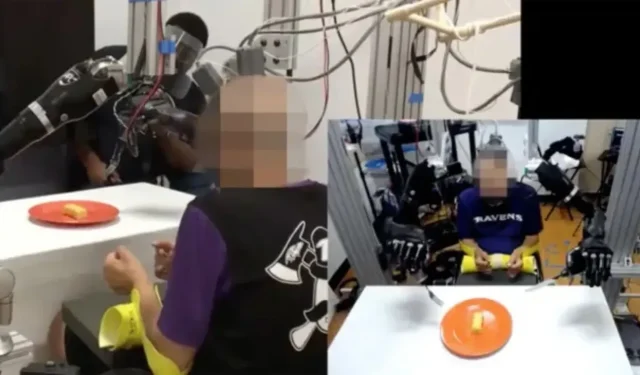Brain-machine interface helps a paralyzed person eat by controlling robotic arms

A brain-machine interface and robotic arms allow a paralyzed person to eat. And this is just the beginning.
Modern technology has made incredible advances in the field of medicine. Dentures, for example, are more efficient than ever. All this is very promising. But we still need to make progress in the field of human-machine interfaces and, in particular, brain-machine, so that this type of product can be easily integrated into everyday life. This is impressive progress.
Brain-machine interface and robotic arms allow a paralyzed person to eat
People with hand paralysis may have significantly fewer feeding problems in the future. Researchers at Johns Hopkins University have developed a new technique that allows a partially paralyzed person to feed using robotic arms attached to him via a brain-machine interface. It was enough for a man to make small movements with his fists at a certain time to see how hands equipped with a fork and knife cut food and bring it to his mouth. According to the researchers, he was able to eat his dessert in 90 seconds.
This new method evolves around a common control system that minimizes the need for mental input to complete a task. A person could use his four degrees of freedom (two for each arm) to control up to 12 degrees of freedom in his robotic arms. The intelligent prosthesis response system also significantly reduced the workload.
And this is just the beginning
The technology is still very young. The scientists want to add sensory feedback, such as touch, rather than relying solely on visual cues. They also hope to improve overall accuracy and efficiency by reducing the need for visual confirmation. In the long term, the team sees such robotic arms recover complex movements and provide greater independence for people with disabilities.
Leave a Reply